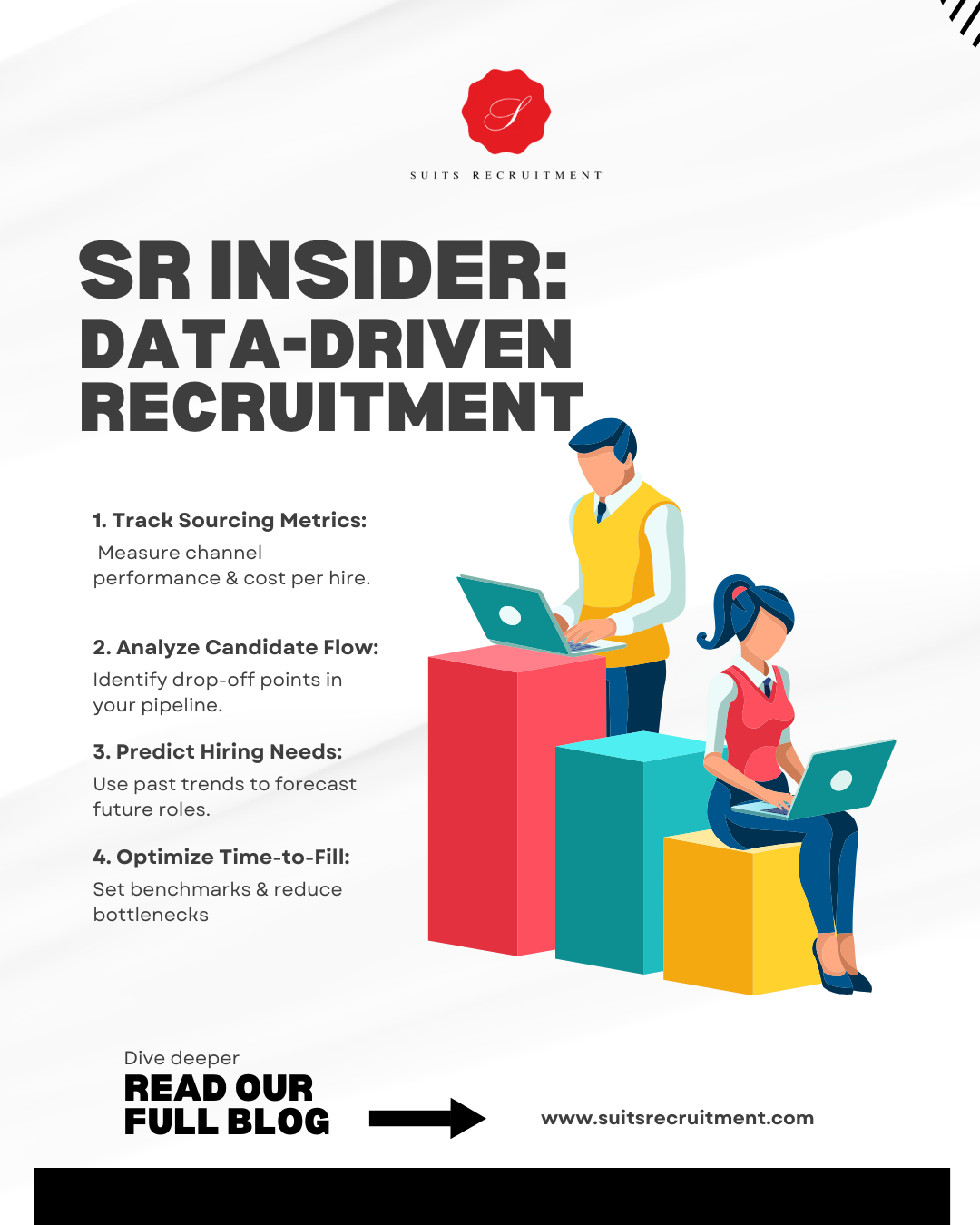









SR Insider: Data-Driven Recruitment Strategies That Work
Recruitment has shifted from gut-feel decision making to measurable, data-backed strategies. For organizations competing in today’s talent market, analytics isn’t just an option—it’s a necessity. At Suits Recruitment, we believe data-driven hiring is the key to placing the right people in the right roles at the right time.
Here’s how you can start leveraging recruitment analytics to improve every step of your hiring process:

1. Track Sourcing Metrics 📊
Every hiring channel—job boards, referrals, social platforms, or agencies—performs differently. By measuring channel effectiveness and cost-per-hire, you’ll quickly see which sources deliver the best candidates and where you may be overspending. Data helps you focus your budget on what works.
2. Analyze Candidate Flow 🔎
Ever wondered why candidates drop out mid-process? A pipeline analysis helps you identify bottlenecks and gaps. For example, if too many candidates drop off after the first interview, it may signal misaligned expectations or a lengthy process. Understanding your flow means smoother hiring.
3. Predict Hiring Needs 📅
Recruitment shouldn’t always be reactive. By reviewing past trends and workforce data, you can forecast future roles and skill shortages. This proactive approach saves costs and keeps your business ahead of sudden staffing demands.
4. Optimize Time-to-Fill ⏱️
Vacancies that remain open too long cost money and productivity. Setting time-to-fill benchmarks and analyzing slow stages in your process helps reduce delays. With data, you can spot inefficiencies, cut down bottlenecks, and speed up the journey from vacancy to placement.
📌 Final Takeaway
A data-driven recruitment strategy doesn’t replace human judgment—it enhances it. By pairing analytics with expertise, businesses can make smarter, fairer, and faster hiring decisions.
👉 Follow us for more tips.
By: Joy Khaylin Ugokwe











